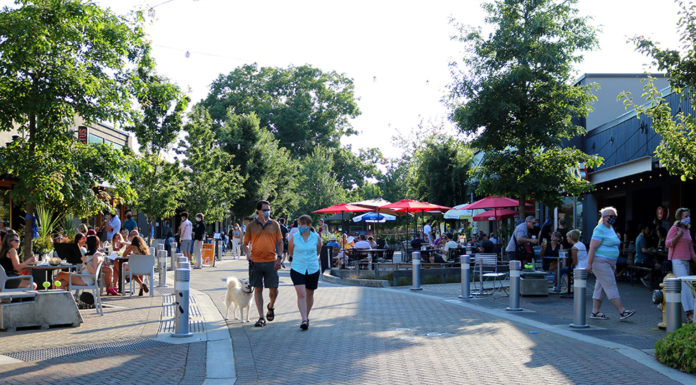
The City of Kirkland is in the middle of a deep dive on how it could make one of its most popular downtown streets more inviting, more people-centric, and more activated. That street is Park Lane, a 400-foot stretch of quiet one-way roadway connecting busy Main Street and Lake Street with popular businesses on either side.
Long envisioned as having extreme potential for creating community space, Park Lane received an overhaul in 2015 that added removable bollards that allow the street to be closed to cars and opened to people for special events. The removable bollards got only occasional use until the street became a focal point for outdoor community gathering during the pandemic in much the same way as Seattle’s Ballard Avenue and Bothell’s Main Street.
Before the pandemic, Kirkland had experimented with opening Park Lane to people on Sundays throughout the summer, but in June of 2020 the city went a step further and implemented nightly restrictions of vehicle traffic. “Evenings on Park Lane” ran throughout that summer and returned in both 2021 and 2022 after it proved incredibly popular. Momentum from that event added to the push for the city to look at longer-term investments that could support Park Lane.
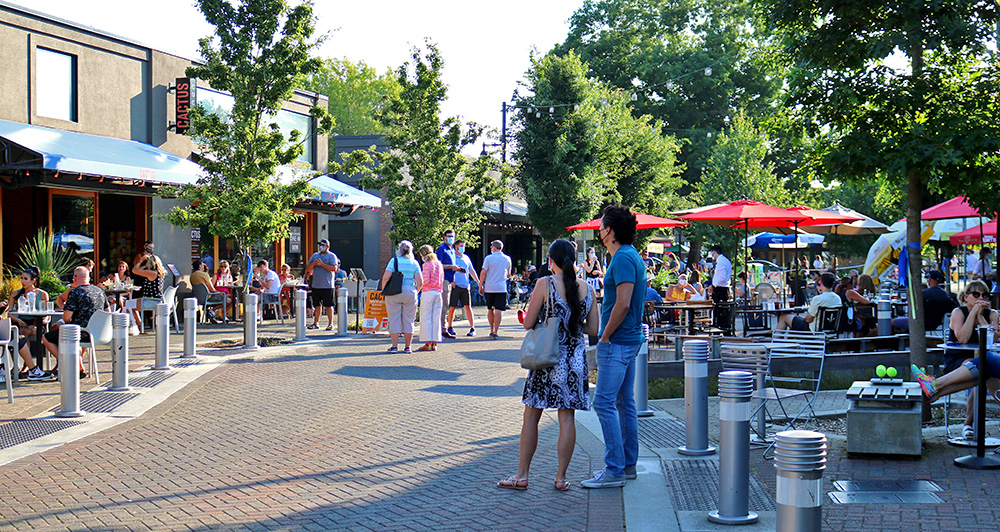
Those investments appear to have pretty broad support in Kirkland. A 2021 survey of Kirkland residents found nearly all respondents wanted the city to look at some type of regular people street on Park Lane, with over two-thirds in favor of opening the street to people at all times of day.
Public support for permanent pedestrianization pushed the City of Kirkland to act. Last year the Kirkland City Council approved funds for a consultant to thoroughly research all potential ways that the city could decide to make it happen. Only 3.7% of respondents in that survey were in favor of keeping Park Lane as it is.
“I see this as part of a larger vision of downtown Kirkland,” Councilmember Amy Falcone said at the time the council approved the study. “I see fully pedestrianizing Park Lane is the next step in this. I believe that fully pedestrianizing Park Lane will also be successful… It’s natural to be reluctant to change, however we’ve seen that Evenings on Park Lane has been a success; the majority do support that, and I feel confident that the same will happen with fully pedestrianizing it in the future.”
But whether the city is at the point of pursuing full pedestrianization is still up in the air.
The study is looking at three potential futures for Park Lane:
- An evening people street in the summer months;
- A 24/7 people street in the summer months, and
- A 24/7 people street year-round.
Last week Kirkland held a townhall timed with the release of a report outlining how each one would work and what would be needed to make it happen.
Evening People Street
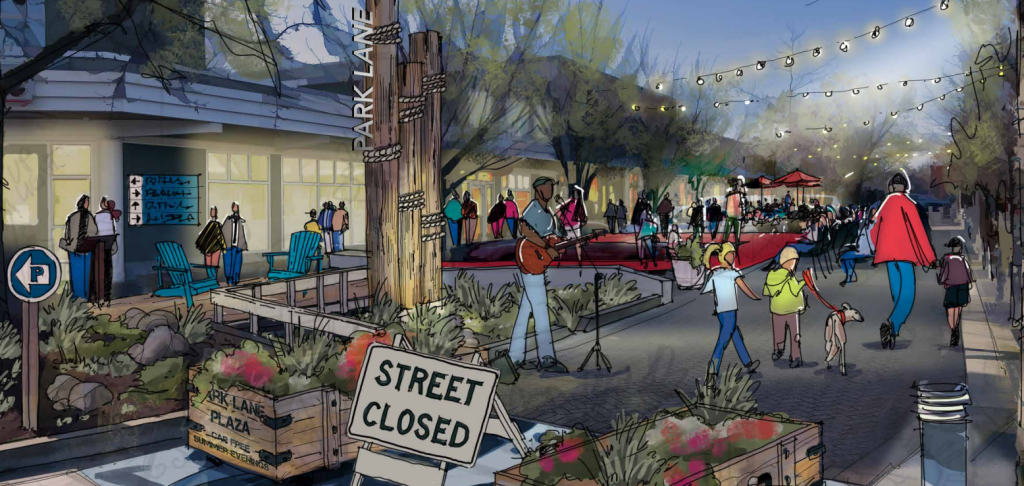
The option that would retain vehicle access on Park Lane for most of the day is a 4pm to 11pm people street from May to October. It would require parking enforcement to issue tickets and tow vehicles every day after 3pm, and city staff to place movable planters in the street in addition to the bollards that already exist on the street, and then move them back after 11pm. Because the closure to vehicles is considered temporary (under 180 days) the Kirkland Fire Department doesn’t need to directly access the entirety of the street, instead being able to access any point along the block from 150 feet at either end. That means some activation features, including tables and chairs, can be in what’s normally the “travel lane.”
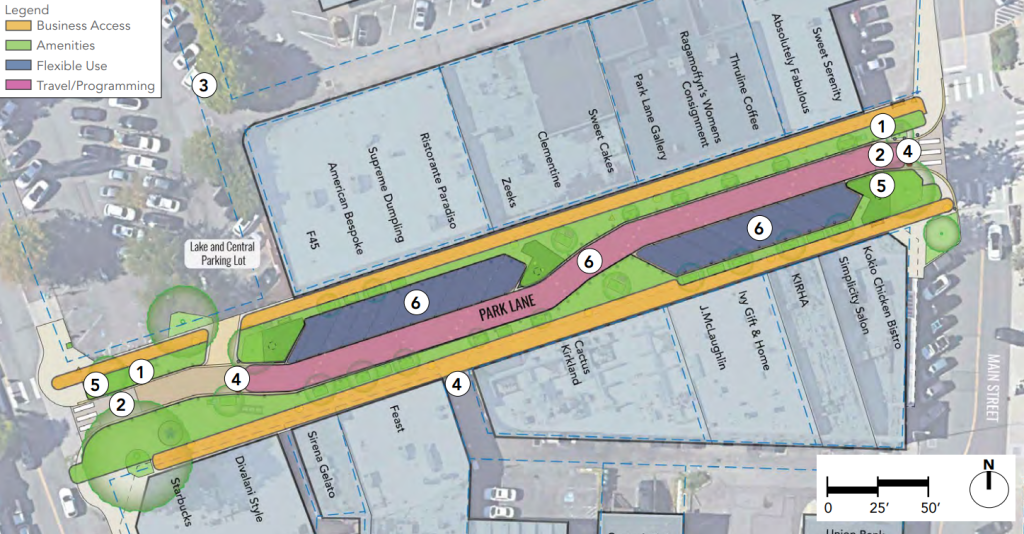
One impetus for exploring future uses for Park Lane is to expand the utility of the street for people who walk or bike in Kirkland, but an evening-only people street wouldn’t go very far toward that goal, only allowing people biking to use the street without motor vehicles on it for a few hours per day.
Summer People Street
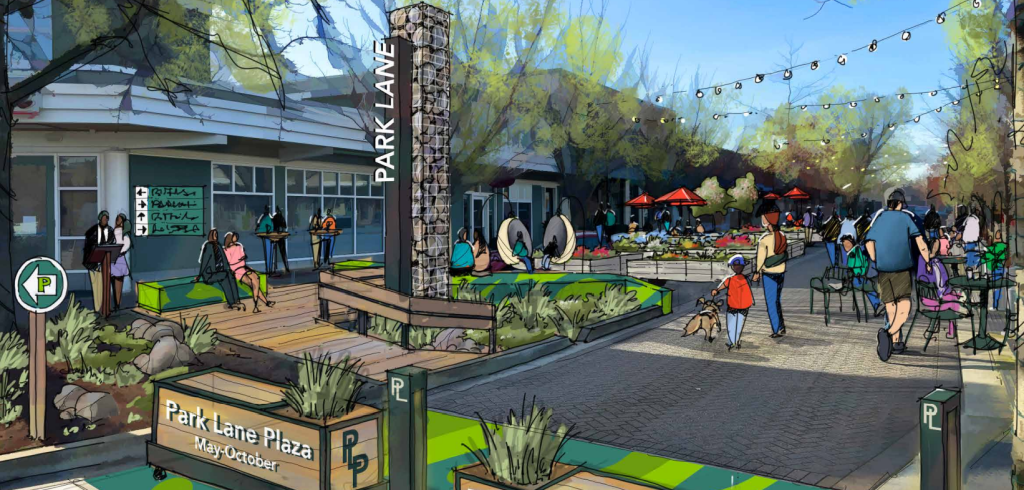
The study is also considering a full conversion of Park Lane to a people street between May and October, with barricades kept in place at all times of day. “A summer seasonal closure would increase predictability of street closure times and reduce day-to-day staff setup/breakdown efforts,” the feasibility study noted. The amount of space available for use of the street is virtually identical to the summer evenings option.
People Street All The Time
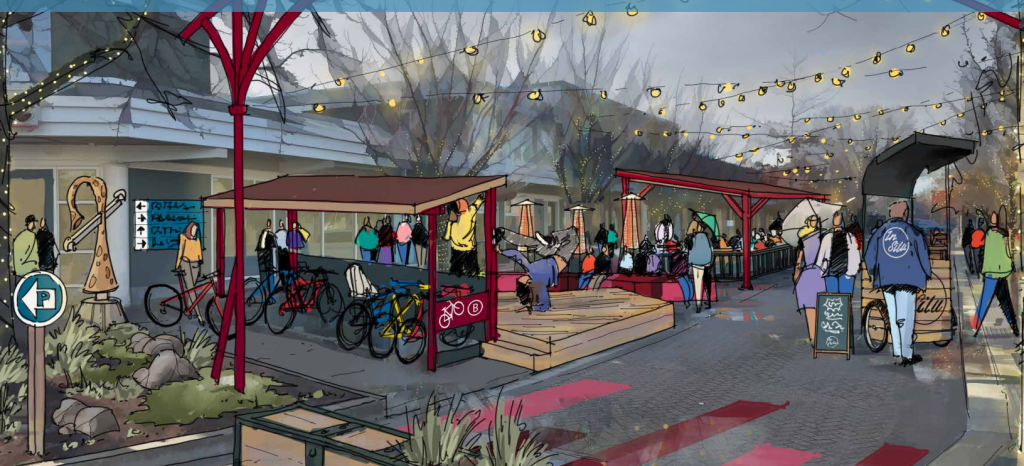
The most transformative option on the table, and the one preferred by a majority of respondents in the 2021 survey, is a full conversion of Park Lane to a people street at all times of day throughout the entire year. Because this wouldn’t be a “temporary closure” of less than 180 days, an emergency lane would need to be maintained along the entirety of Park Lane, with tables and chairs prohibited from blocking it. Instead Kirkland would focus more on permanent fixtures, including durable streatery infrastructure similar to what has been seen on Ballard Avenue, and street seating separate from the dining areas.
“A mix of permanent and modular furnishings allow for change and flexibility over time while providing a consistent and predictable destination,” the report noted. “It would include expanded public art, a focus on year-round activation strategies, and seasonally expanded landscaping.” A permanent people street would maintain consistent bike and pedestrian access, providing a direct route between the busy bike routes on the waterfront and the Kirkland Transit Center.
Parking is already a major focal point in the debate over the street. Park Lane only has 17 stalls, two of which are accessible for people with disabled parking permits. That amount of parking is dwarfed by the number of public, off-street parking lots that are available nearby, making the argument that Park Lane’s parking is essential hard to swallow. One surface lot, owned by the City, is directly on Park Lane itself.
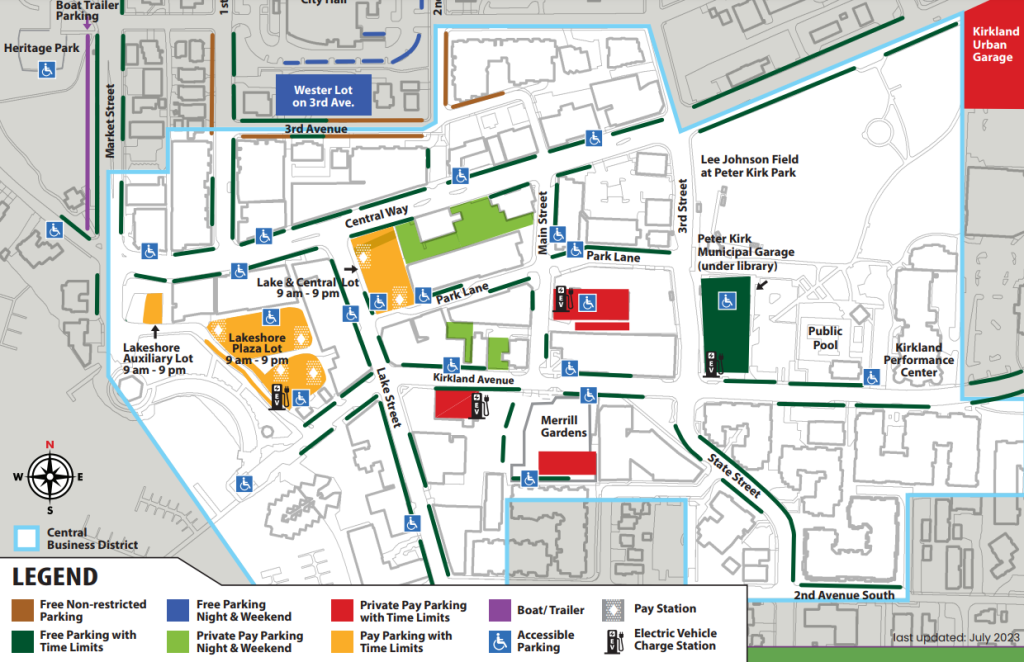
Ultimately, the Kirkland City Council could decide to do nothing with Park Lane. Last week, the Kirkland City Council referred a petition submitted to the council “expressing opposition to a permanent or seasonal closure of Park Lane between Main and Lake Street” back to city staff for follow up. The petition was filed by Tina Moody, member of the Downtown Kirkland Alliance and owner of the Absolutely Fabulous consignment shop on Park Lane, and includes more than 1,000 signatures — granted a majority list their addresses as outside of Kirkland.
“We feel the removal of all parking as well as accessibility will put dozens of businesses in jeopardy of closing,” the petitioners claim.
Kirkland city staff will spend the coming weeks answering outstanding questions, many from business owners along the street, about exactly what’s on the table. In September, the city council will formally take up the issue of picking a path forward.
“The point of this is to ask, ‘what would it take to be successful and to be sustained?'” Kurt Triplett, Kirkland’s city manager, asked the attendees at last week’s town hall. “We had some successes and some challenges with the pilots, and the whole reason the council authorized this funding was to say, ‘if we were to do something, what truly is the cost of the investment and what truly is the cost of sustaining it,’ because the council doesn’t want to have it not work any more than any of you do.”
Every option on the table will have detractors, and it will be up to councilmembers to be bold enough to articulate their own vision.
Ryan Packer has been writing for The Urbanist since 2015, and currently reports full-time as Contributing Editor. Their beats are transportation, land use, public space, traffic safety, and obscure community meetings. Packer has also reported for other regional outlets including BikePortland, Seattle Met, and PubliCola. They live in the Capitol Hill neighborhood of Seattle.

